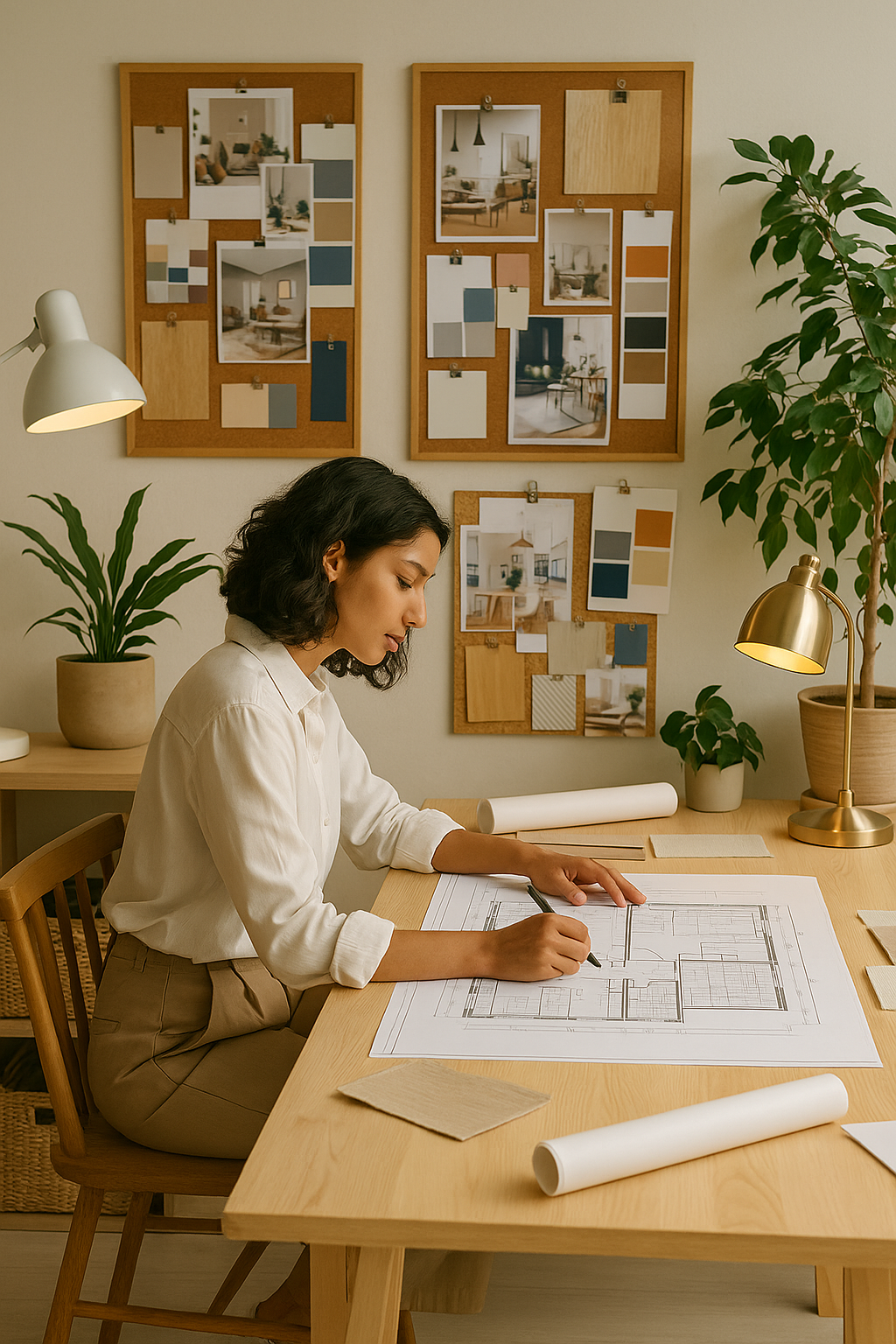Wood panelling is one of those timeless classics that can be modern, traditional or cosy. It can add warmth and texture as well as a touch of class to your interiors? There is a whole world of wood panelling out there and designers have been experimenting with this natural material, with fascinating results. Let’s take a look.

Benefits of wood panelling
Wood panelling offers a surprising range of benefits for interior walls. Here are a few:
- Adds warmth and character to any space
- Provides insulation and soundproofing
- Covers imperfections and adds texture
- Enhances the visual appeal of the room
- Durable and long-lasting
Whether you install wood panelling in your living room, bedroom, or office, its benefits make it a popular choice for interior design.

Popular types of wood panelling
There are many options available, each with its unique characteristics. Here are some popular options to consider:
- Shiplap: This type of panelling features long, overlapping boards with a distinctive groove, creating a rustic farmhouse look.
- Beadboard: Beadboard panelling consists of vertical planks with a minor groove in between. It adds a classic and timeless charm to any interior.
- Tongue and Groove: Tongue and groove panelling have interlocking edges that fit together, creating a seamless surface.
- Reclaimed Wood: Reclaimed wood panelling is a great option for a more eco-friendly choice. It gives a space a unique, rustic appeal.
- Flat Panel: Flat panelling offers a clean and modern look. It is often used in contemporary interior designs.
These are just a few examples, but with the large variety of options available, designers can allow their creativity to flourish using different combinations, colours and styles.
Before selecting wood panelling for your interior walls, there are a few factors to consider:
- Durability: Consider the maintenance requirements of the wood panelling. Some types may require more frequent upkeep than others.
- Budget: Set a budget for your project and choose wood panelling options that fit within your financial constraints.
- Installation: Evaluate the installation process and whether you have the necessary skills and tools to complete it yourself or if you need professional assistance.
- Compatibility: Ensure that the wood panelling you choose is compatible with the room's existing elements, such as the flooring, furniture, and colour scheme.
There are some wonderfully creative ways you can include wood panelling in your designs. Here are just a few ideas that can help inspire you in your designs.
- Accent Wall: Create a focal point in a room by installing wood panelling on one wall. This adds visual interest and depth to the space.
- Ceiling Treatment: Instead of traditional drywall, use wood panelling on the ceiling to create a unique and inviting atmosphere.
- Wainscoting: Install wood panelling on the lower half of the walls, known as wainscoting. This adds a touch of elegance to dining rooms, hallways, or entryways.
- Built-in Shelving: Wood panelling is used to construct built-in shelves or storage units. These provide functional storage and add architectural interest to the room.
- Headboard: Install wood panelling behind your bed to create a stunning headboard. This can instil a sense of luxury and sophistication to your bedroom.
These are just a few creative ways to incorporate wood panelling into your interior design but the possibilities are endless!

Maintaining and caring for wood panelling
Proper maintenance is essential to ensure the longevity and beauty of your wood panelling. While it may seem obvious to recommend regular cleaning, it is also worth mentioning as some woods require soft cloths and dusting. It is also advisable to be mindful of excessive moisture. This can cause warping of the wood and even mould. Many woods also require protective finish. Polyurethane or varnish are often used to seal the wood and add an additional layer of protection. However, be careful of the products you use and make sure you avoid harsh chemicals. Instead opt for gentle, non-abrasive cleaners specifically designed for wood surfaces to avoid damaging the panelling. To maintain the overall appearance, touch up the finish and repair any damages and check regularly for scratches or dents. These simple maintenance tips can keep your wood panelling looking beautiful for years.
Wood panelling offers interior spaces versatility, warmth, and aesthetic appeal. Tooling up on the different woods available, allows you to make informed and creative choices and could be the element your scheme needs to create that perfect finish. If you are ready to hone your interior design skills, enrol in our Interior Design courses today. Let our experts guide you on your inspiring journey of design.

